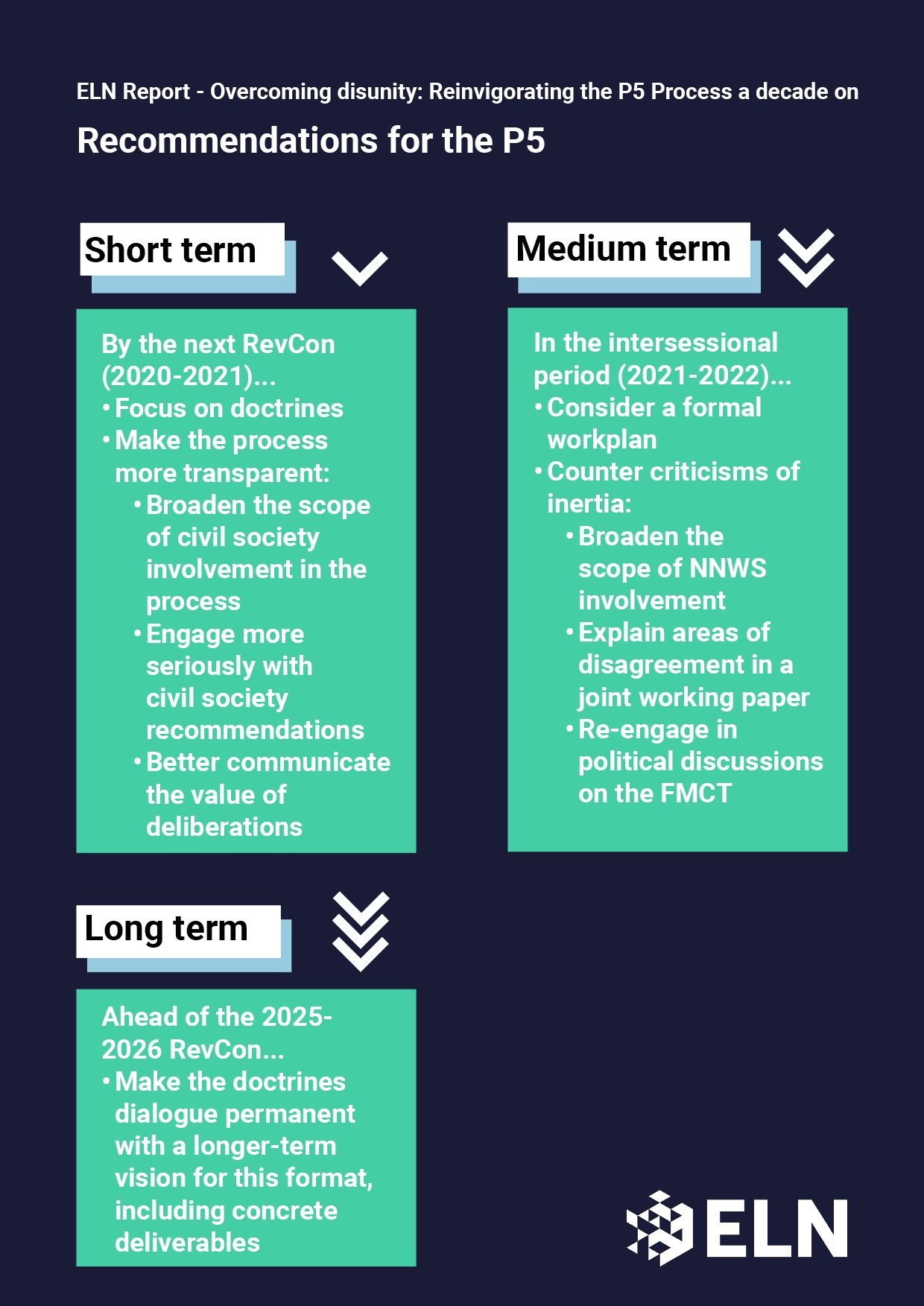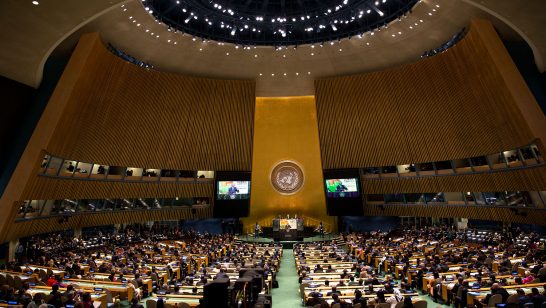
As the P5 Process enters its eleventh year and as a prelude to the tenth review conference of the Treaty on the Non-Proliferation of Nuclear Weapons (NPT), this new report from the ELN offers practical recommendations for the P5 to reduce nuclear risks.
It is the product of a ten-month-long effort by the ELN to explore common ground among the five nuclear-weapon states (NWS) parties to the NPT. Over ten months, ELN researchers conducted interviews with more than 60 officials and experts from all five NWS and some non-nuclear-weapon states (NNWS).
The report, by ELN Policy Fellow Dr and ELN Research Director Andreas Persbo, sets out practical recommendations for the P5 states which are grouped into three time periods to offer a systematic menu of options for the P5. Namely, steps that can be taken by the next NPT review conference (2020-2021), over the following ‘intersessional period’ (2021-2022), and throughout the ‘preparatory session’ for the 2025-2026 RevCon. It also outlines options for the P5, designed to strengthen their collaboration and enhance the effectiveness of their joint undertaking.
- For urgent action by the 2021 NPT review conference, the report calls for the nuclear-weapon states, the P5, to clarify their strategic intentions because mistrust and misperceptions about their nuclear doctrines are the chief impediment to substantive progress. Thus, by 2021, the P5 should resolve misunderstandings about each other’s doctrines by publishing a joint document outlining the role of nuclear weapons in national security strategies and the circumstances in which they would consider the use of nuclear weapons.
- In the 2021-2022 intersessional period, the P5 should focus on enhancing the transparency of the P5 process (e.g., by broadening the scope of civil society and non-nuclear-weapon state engagement, setting a formal workplan with clear objectives and clearly communicating areas of disagreement).
- Ahead of the 2025-2026 NPT review conference, the P5 should adopt specific risk reduction measures in crisis communication. These steps would help the P5 to avoid and manage dangerous situations that could inadvertently escalate into war. In particular, the P5 should conclude a dedicated agreement to this end, modelled on bilateral US-USSR agreements from the early 1970s and 1980s, and establish a multilateral crisis hotline.

The opinions articulated above represent the views of the authors, and do not necessarily reflect the position of the European Leadership Network (ELN) or any of the ELN’s members. The ELN’s aim is to encourage debates that will help develop Europe’s capacity to address pressing foreign, defence, and security challenges.
Image: London P5 Conference. Flickr, Foreign and Commonwealth Office




